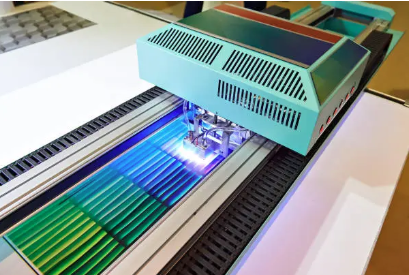
Grocery trips tend to take on a life of their own. A person might leave home planning to grab two or three things, then somehow ends up wandering through aisle after aisle, dodging carts, forgetting items, retracing steps, then leaving with the uneasy feeling that something was missed anyway. The whole process can stretch a simple errand into a small saga no one asked for.
A newer grocery pickup model tries to sidestep all that frustration. Instead of guiding people through a maze of shelves, the system sends items through an underground track straight to a pickup point. Shoppers place an order, pull into a lane, wait for a short moment, then receive their bags without stepping into a store. The hurried part stays hidden out of sight, which makes the surface experience feel strangely calm.
For anyone who has ever tried to race through a store before dinner, the idea feels almost unreal. The usual scramble disappears. No weaving around crowds. No squeaky carts. No getting stuck behind someone lost in a deep debate with themselves about pasta shapes. The underground transportation system safely delivers the groceries to the car, as the shopper sits and wonders how the errand became so simple.
Some people compare it to those old movie scenes with vacuum tubes zipping messages across a room. The reality feels much more grounded. Items move below the surface in a clean, steady flow. Up above, the pickup lane looks almost serene. Cars line up, move forward, then leave with their groceries faster than most people expect. Nothing flashy. Just a smooth process that trims away the parts of grocery shopping that everyone secretly dreads.
The shift changes the rhythm of the whole experience. The frantic part once handled by each shopper now sits below the pavement, out of view. That alone alters the errand in a way that feels refreshing. Shoppers stay focused on what they actually need instead of getting sidetracked by endcaps or snacks that mysteriously leap into carts. The result feels lighter. More straightforward. Less draining.
One of the most surprising things about this model is how quiet the improvement feels. It does not turn grocery shopping into anything dramatic. It simply removes the time sink that used to define the errand. A quick stop becomes just that, a quick stop. No crowd dodging. No backtracking. No mental checklist repeating in a loop while wandering from one section to another.
Small conveniences like this tend to add up. A few minutes saved here, a little less stress there, and suddenly the weekly grocery run feels like something that no longer eats into the day. People with busy schedules benefit from that kind of simplicity, and even those with slower routines can appreciate a version of this errand that does not chip away at their patience.
If this underground model spreads, grocery shopping might shrink into a minor task again. Someone could swing by on the way home without bracing for a crowd or preparing for a long walk through aisles. Weekends might feel less clogged. Weeknight dinners might come together with fewer last minute scrambles. The whole routine becomes something manageable, almost pleasant in its own small way.
In a time when many parts of life feel overloaded or drawn out, a cleaner, faster way to pick up groceries feels like a welcome change. Not dramatic. Not overhyped. Just smooth and efficient. A simple fix for a chore that has dragged on too long.




